Injuries On The Knee
The knees provide solid support for the body while also allowing the legs to rise and bend. The most important joint in the body, the knee is highly susceptible to injuries. One of the finest things you can do for the rest of your body and your joints is to stay active. However, accidents can occur, and knee injuries are common.
With the right care, knee ligament injuries can be treated to relieve pain, provide instability, and prevent problems with sports and other activities. By paying great attention to the location and severity of your knee pain, you may identify the type of injury you’ve suffered and whether you require medical treatment.
Consider that knee discomfort that makes it difficult to walk or stand up should be treated as an emergency. The most frequent reasons for knee discomfort are aging, accidents, and repetitive strain on the knee.
Typical knee problems include tendinitis, arthritis, strained or sprained ligaments, and cartilage tears. The knee ligaments may be injured as a result of trauma, such as a vehicle accident. Sports injuries may be the reason for them.
Depending on the nature and severity of the ailment, there are non-operative and surgical therapy options for knee pain and issues. Simple treatments for many knee problems, like bracing and rehabilitation exercises, can be effective. Surgery can be necessary to repair other injuries.
Table of Contents
The anatomical components of the knee joint are:
The femur (thighbone), tibia (shin bone), and patella (kneecap) are the three bones that make up the knee joint. Knee joints are formed by the union of these three bones. The back of the patella and the tips of the femur and tibia are covered in articular cartilage.
As you bend or straighten your leg, the cartilage enables the bones of the knee joint to move smoothly against one another. The meniscus, a rectangular piece of tough, flexible cartilage, is located between your tibia and femur. The meniscus cartilage covers the joint and distributes pressure between the tibia and femur bones.
The four primary tissue types in the knee are tendons, cartilage, ligaments, and bones. Injury can cause harm to any of these vital tissue types. In addition, underlying medical conditions such as osteoarthritis, rheumatoid arthritis, and systemic lupus erythematosus can cause harm to the knee.
The bones: The femur, or thighbone, the tibia, or shinbone, and the patella, or kneecap, come together to form the knee joint. To offer some protection, the patella rests in front of the joint.
Cartilage in the articulations: Articular cartilage covers the rear of the patella, the extremities of the femur and tibia, and both. As you bend or straighten your leg, the smooth surface of this material helps your knee bones move in unison.
Meniscus: Two structures that resemble a piece of meniscal cartilage sit between your femur and tibia and act as springs. The meniscus, which helps stabilize and cushion the joint, is tougher and more springy than articular cartilage. Most often, when someone discusses a torn meniscus in the knee, they mean a torn piece of cartilage.
Ligaments: Bones that are next to one another are joined by ligaments. The four key ligaments in your knee work as powerful cords to maintain the stability of your knee and the strength of your bones.
Collateral ligaments: These are located on the sides of your knees. The medial collateral ligament is on the inside of the knee, while the lateral collateral ligament is on the outside. They regulate the side-to-side movement of your knee.
Cruciate ligaments: They are situated within the knee joint. The anterior cruciate ligament is in front of the posterior cruciate ligament, and it crosses over to form a circle. The front and rear movements of your knee are controlled by the cruciate ligaments.
Tendons: Tendons join the muscles to the bones. The quadriceps tendon connects the muscles in the front of the leg to the patella. In contrast, the patellar tendon extends from the patella to the tibia.
Symptoms:
Depending on what’s causing the issue, knee discomfort may change in location and intensity. When knee discomfort is present, some indications and symptoms to look out for are:
When you suffer from Knee bursitis, you might be:
- Discomfort in your knee that gets worse when you bend it and swelling across the front of your kneecap
- Having trouble kneeling and walking redness around your knee
You may have some pain and swelling if your tendons are ripped. Additionally, you might discover:
- Raising your knee won’t be possible for you.
- Your kneecap is not resting in the proper position.
If your knee meniscus is injured, you could:
- Experience severe pain, and your knee might swell after a few hours
- You might also have a “locked” knee that prevents you from moving
- It normally can walk with some assistance on your leg.
Symptoms of a torn knee ligament could include:
- Pain
- swelling
- Instability—you might think your knee is giving up.
- When a ligament is injured, you may hear or feel a pop or crack and discover that you are unable to bear your entire weight on your leg.
Your knee may hurt, feel hot, and seem red if you have an infection. Additionally, you can be very overheated.
Common knee injuries include the following:
The knee’s complexity and many elements make it more susceptible to a wide variety of conditions. The most frequent injuries to the knee include dislocations, fractures, sprains, and tears in the ligaments. Simple treatments for many knee problems, like bracing and rehabilitation exercises, can be effective. Surgery can be necessary to repair other injuries.
Anterior Cruciate Ligament (ACL) Injuries:
- The tissue in the knee that connects the upper and lower leg bones and aids in maintaining knee stability is called the anterior cruciate ligament (ACL). If the lower leg bends too much forward or becomes twisted, the ACL may tear.
- Roughly a few sports-related injuries are ACL injuries, which are among the most prevalent kinds of knee injuries.
- ACL injuries can vary in severity, from a minor tear in the ligament to a major rip that separates the ligament from the bone.
- The degree of the injury determines the available treatment choices for ACL injuries. Surgery may not always be necessary for ACL injuries, but it may be based on several variables, including the extent of the tear.
- Following an ACL injury, physical therapy is frequently advised. anterior cruciate ligament injuries coexist with injury to other knee tissues like the meniscus, articular cartilage, or other ligaments.
Dislocation:
- A dislocation is a condition that happens when one or more bones in the knee are partial or misplaced.
- For instance, the patella may slip or the tibia and femur may be pulled out of position. When the knee bones shift, knee dislocations happen.
- This could happen following a severe trauma such as a vehicle accident, fall, or high-speed clash.
- Another way to create it is to twist your knee with one foot firmly planted on the ground. Relocation is necessary after displacements.
- From time to time, the kneecap will automatically adjust and return to its original location.
Fractures:
- The patella is the bone that breaks around the knee most frequently.
- Fractures can also occur at the ends of the femur and tibia where they unite to form the knee joint.
- High-energy trauma from things like car crashes and falls from great heights is the reason behind a lot of knee fractures.
- Kneecap fractures are a common but dangerous injury that typically needs to be treated with immobilization or, in rare circumstances, surgery.
Tendon Tears:
- The patellar tendon, a tendon in the knee, works together with the knee muscles in the front of the thigh to straighten the leg.
- Although athletes who run or jump sports and middle-aged adults are more likely to get tears in their patellar tendon, anyone can suffer a tendon tear. To restore full function after a total tear, surgery is necessary.
- This kind of harm is considered to be permanent. However, most tears are only halfway repaired, and rest and physical therapy are required to speed up the healing process.
- You must see an orthopedic professional as soon as possible if you have had knee discomfort or injuries. Your orthopedist can help you get back on track as quickly as possible by diagnosing you and recommending a course of treatment.
- Sports-related meniscal tears are common. Meniscus tears can occur as a result of being tackled, twisted, divided, or pivoted. Aging or arthritis can also result in meniscal tears.
- In cases when the menisci have weakened with age, an abrupt twist made when getting out of a chair could be sufficient to rupture the tendon.
- Unfortunately, meniscus tears frequently occur in contact sports like football and volleyball as well as games that involve jumping, like soccer and volleyball.
- A runner’s meniscus may tear if they suddenly shift their course. Depending on the degree of the rip and the extent of the injury, surgery can be necessary.
Collateral Ligament Injuries:
- Collateral ligaments are that join the shinbone and thighbone.
- Athletes frequently suffer injuries to these ligaments, especially those who play contact sports. Direct collisions or impacts with other people or objects frequently result in tears to the collateral ligaments.
Posterior Cruciate Ligament (PCL) Injuries:
- Additionally connecting the thigh bone to the shin bone in the knee is the posterior cruciate ligament (PCL).
- When the knee is bent, a blow to the front of the knee frequently injures the posterior cruciate ligament. This frequently happens in car accidents and collisions in sports.
- Tears in the posterior cruciate ligament typically occur in partial tears that may heal on their own.
- Various knee injuries can cause inflammation in the bursae, which are small spaces filled with fluid that cushion the outside of the knee joint and make it easier for ligaments and tendons to move over.
Iliotibial band syndrome:
- The condition known as iliotibial band syndrome occurs when your hip or knee bones rub against the iliotibial band tendon, causing it to become inflamed or swollen.
- A prevalent condition among long-distance runners is iliotibial band syndrome. It is brought on by friction between the outside of the knee joint and the iliotibial band, which is situated on the outside of the knee.
- Usually, the discomfort begins as a slight annoyance. It may eventually worsen to the point where a runner has to take a break from running to allow the iliotibial band to heal.
Strained or sprained muscles in the knee ligaments:
- A blow to the knee or an abrupt twist of the knee are the usual causes of a sprained or strained knee ligament or muscle.
- Pain, edema, and trouble walking are typical symptoms.
Arthritis:
- The most frequent type of disease that affects the knee is osteoarthritis.
- A degenerative condition known as osteoarthritis causes the joint’s cartilage to gradually deteriorate. Older and middle-aged adults are frequently affected.
- Excessive stress on the joint, such as being overweight or sustaining repeated injuries, might result in osteoarthritis.
- Additionally, rheumatoid arthritis can damage the knee cartilage and cause inflammation in the joint. Compared to osteoarthritis, rheumatoid arthritis frequently strikes people at a younger age.
Overuse Injuries to the Knee:
Consuming too much When the knee feels compressed repeatedly or frequently injuries might result. Jogging, riding, skiing, and jumping are a few sports and activities that might result in overuse knee issues.
- Overuse injuries develop gradually.
- Repetitive tension on the joints results in overuse injuries.
- Knee discomfort and inflammation are caused by overuse injuries.
Knee overuse injuries include:
Bursitis: Bursitis is the name for inflammation of the small pockets of fluid that lubricate and support the knee.
Tendinitis: Inflammation of the tendons around the knee is known as tendinitis.
Tendinosis: Small tears in the tendons surrounding the knee cause tendon rupture.
Plica syndrome: Folding or thickening of the knee ligaments is known as plica syndrome.
Patellofemoral Pain Syndrome: Pain in the front of the knee brought on by injury, Patellofemoral pain syndrome is caused by excessive weight gain or problems with the knee cap.
How can knee disorders be identified?
Apart from an extensive medical history and physical examination, other tests for knee issues could involve:
X-ray: The process uses invisible electromagnetic radiation beams to view inside tissues, bones, and organs on film.
MRI: Magnetic resonance imaging is referred to as MRI. With the aid of large magnets, radiofrequency technology, and a computer, this test produces exact images of the body’s organs and architecture. It can also frequently detect disease or injury to surrounding muscles and ligaments.
CT scan examinations: This test creates horizontal, or axial, images (commonly referred to as slices) of the body using X-rays and computer technologies. A CT scan may show every part of the body, including the muscles, organs, fat, and bones, in exquisite detail.
When to visit your doctor:
You need to talk to a doctor for advice
- Experiencing a “pop” sound during your fall, since this is frequently linked to a ruptured ligament.
- Another common sign of a ruptured ligament in the knee is an unstable, buckling, or giving-way sensation.
- One cannot kneel and walk.
- Your knee cannot be completely bent or straightened.
- If you are unable to bear weight on your knee, it could indicate that the joint has structural damage.
- Have noticeable edema in the knees.
- Discover an obvious abnormality in your knee or leg.
- After a fall, your knee may feel warm to the touch. This could be an indication of inflammation from a torn tendon or muscle. Additionally, warmth may indicate bursitis or an infection.
- Suffer from excruciating knee pain linked to an injury.
- If bleeding from a cut or scrape continues for longer than a few minutes, you may need to get medical attention.
How are injuries to the knee treated?
In the first 48 to 72 hours after a knee injury, provide first aid. Here are some recommendations for treating a knee injury with first aid;
- Put an instant stop to your activity.
- Avoid “doing work beyond” your pain.
- First, give the joint some rest.
- Pain, edema, and internal bleeding should be treated with ice packs for fifteen minutes every day for several hours.
- Start by covering the lower leg with a strong tape on the knee.
- Raise the hurt leg.
- Avoid heating the joint.
- Keep away from alcohol as it promotes edema and bleeding.
- Avoid massaging the joint as this might exacerbate swelling and bleeding.
At-home care:
R.I.C.E. can help knee injuries heal quite significantly. Your plan of action will depend on your injury. Mild to moderate problems usually go away on their own. Mild to moderate issues usually go away on their own.
The easiest way to hurry up the healing process is to;
- Allow your knee to rest. Take a couple of days off from doing anything strenuous.
- To reduce swelling and pain, apply ice. Give it 15 to 20 minutes every three to four hours. Keep doing this for two to three days, or until the discomfort stops.
- Put pressure on your knee. Use straps, long sleeves, or an elastic bandage to wrap the joint. It will reduce edema or encourage.
- To lessen swelling when you sit or lie down, raise your knee and place a pillow beneath your heel.
Medicine:
- Utilize pain relievers. Nonsteroidal anti-inflammatory drugs (NSAIDs) such as ibuprofen or naproxen can help decrease pain and swelling. Unless your doctor instructs you otherwise, you should only occasionally use these medications due to their potential for negative effects.
Physical Therapy:
- To restore function to your knee joint, physical therapy will involve a series of stretches and exercises that you must perform for several weeks. Moreover, the exercises will strengthen the muscles that surround the joint. Exercises for strengthening and stretching should be done as recommended by the doctor you see.
Surgical Treatment:
- When physical therapy and other treatments have failed to fully restore function in your knee injury, you may require surgery to treat the condition. Certain injuries, like a fully torn ligament, require surgery since they won’t heal on their own.
- Numerous arthroscopic knee procedures can be carried out using tiny instruments and tiny incisions, making them minimally invasive. In other situations, repairing the injury will require your surgeon to make a wider incision.
- Surgery is often necessary for many fractures and injuries near the knee to fully recover limb function.
- Surgery can be performed arthroscopically in certain circumstances, such as numerous ACL tears, by making tiny incisions and using tiny equipment.
- Conversely, fractures typically call for open surgery, which entails a wider incision to provide your physician with a better view and easier access to the damaged components.
Risk the elements:
Several variables can raise your risk of developing knee issues, such as;
Excess weight: Even during routine tasks like walking or stair climbing, being overweight or obese puts additional strain on your knee joints. It also speeds up the degeneration of joint cartilage, raising your chance of developing osteoarthritis.
Insufficient strength or flexibility in the muscles: The risk of knee injury might be raised by a lack of strength and flexibility. Your joints are stabilized and protected by strong muscles, and you can reach your maximum range of motion with the support of flexible muscles.
Specific occupations or professions: Certain sports will put greater strain on your knees than others. Basketball jumps and turns, mountain skiing with its hard skiing boots and susceptibility to fall, and the constant pounding your knees get when you run or jog all raise your risk of knee injuries. Jobs that frequently cause knee strain, such as farming or construction, may potentially be dangerous.
Previous injury: Your risk of suffering another knee injury increases if you have had an injury in the past.
Prevention:
While knee pain cannot always be avoided, the following techniques may help prevent injuries and joint degradation.
- Don’t acquire any more fat in your body. It’s one of the best things you can do for your knees to maintain a healthy weight.
- Your joints are strained more by every extra weight you gain, which raises your risk of osteoarthritis and other ailments.
- Dress up so you can play your sport.
- Spend time exercising your muscles to get them ready for the demands of participating in sports.
- Perfect your practice.
- Make sure your sports or activity-related technique and movement patterns are as good as they can be.
- Professional guidance can be very beneficial.
- Gain strength while maintaining your flexibility. One of the main causes of knee injury is weak muscles.
- Building up the muscles on the front and rear of your thighs that support your knees quadriceps and hamstrings will aid you.
- Training for balance and stability improves the efficiency with which the muscles surrounding your knees cooperate.
- Furthermore, stretching is essential since tense muscles can potentially lead to damage.
- Make an effort to include flexibility exercises in your training.
- Participate in appropriate exercises.
- Should you suffer from osteoarthritis, persistent knee discomfort, or recurrent injuries, it can be necessary to modify your exercise regimen. At least a few days a week, think about moving to low-impact activities like swimming, water aerobics, or other similar options.
- Relief can occasionally be obtained by merely reducing high-impact activities.
When Will I Feel Healthier in My Knee?
The length of your healing depends on your injury. Moreover, some people heal more quickly than others by nature. Ask your doctor whether there’s anything you can do to prevent aggravating your knee pain while you heal. Be patient in everything you do.
Resuming your usual level of physical exercise should wait until you see these symptoms:
- You can bend and straighten your knee without experiencing any pain.
- Walking, running, sprinting, or jumping do not cause you any pain in your knee.
- The wounded knee has the same strength as the uninjured knee.
Summary
Knee pain is an everyday occurrence that affects people of all ages. Your knee pain could potentially be caused by an injury such as a ruptured ligament or torn cartilage. Knee discomfort can also be put on by illnesses including gout, arthritis, and infections. These injuries can be caused by various forces, high impacts from motor accidents falls, or forceful twists of the knee. It offers an effortless, gliding surface for joint mobility while also reducing shock.
Your knee pain could potentially be caused by an injury such as a burst ligament or torn cartilage. Knee annoyance can also be caused by illnesses which include gout, arthritis, and infections. These injuries can be produced by various forces, high impacts from motor accidents falls, or forceful twists of the knee. Sprains, rips, dislocations, and fractures are common knee injuries.
Many types of moderate knee discomfort are effectively treated with techniques for self-care. Physical therapy and knee braces are other choices for pain management. You should visit a doctor if you experience any of the following symptoms in addition to pain: severe swelling, buckling or giving way sensation, and an inability to bear weight on the affected knee. However, there are situations when surgery is necessary to fix your knee. While minor injuries to the knee can frequently be treated with rest and a knee brace, surgical intervention may be necessary for tears of a ligament or tendon. To guarantee a full recovery from a knee injury, it’s also essential to adhere to any recommended physical therapy. By doing this, you’ll reduce discomfort, speed up your recuperation, and get your knee’s strength and range of motion back.
Although it’s not always possible to prevent knee injuries, one can lower their risk by taking some precautions. Getting medical help for a knee injury as soon as possible improves the likelihood of a full recovery. Open surgery, arthroscopic surgery, and physical therapy are available as forms of treatment.
FAQs
Which are the three most prevalent knee injuries?
The most common knee injuries include sprains and tears of soft tissues (e.g., ligaments, meniscus), fractures, and dislocations. In many situations, injuries involve many structures in the knee. Pain and swelling are the most frequent symptoms of a knee injury. In addition, the knee could catch or lock.
How do you evaluate whether a knee injury is severe?
Your knee cannot bear weight.
You are in severe pain.
Your knee swelled suddenly.
Do knee injuries heal on their own?
Mild knee injuries may heal independently, but a doctor or physiotherapist should evaluate and diagnose any injury. Prolonged knee discomfort needs professional assistance. Prompt medical intervention for any knee injury increases the likelihood of complete recovery.
What is the healing period for a knee injury?
Numerous factors can affect how long it takes for a knee injury to heal. It might take anything from two weeks to nine months for common knee injuries to heal completely. Some wounds heal quickly and require little medical attention. Other injuries can require a protracted recuperation period, physical therapy, or surgery.
Should someone with a knee injury walk?
If you’re not told to put any weight through your knee, try to walk normally by placing your heel down first. It is crucial to keep moving as much as you can, but doing too much too soon after your accident could exacerbate the discomfort and swelling.
Does heat help a knee injury?
Heat can then be applied to aid in regaining movement. Heat is an effective approach to relieve stiffness and tightness in your joints.
If it hurts, should I bandage my knee?
Use a knee brace or wrap your knee to provide support. We refer to this as compression. Not too tight, but sufficiently tight to fit. Knee swelling should be under control with the appropriate compression.
Which workouts should you refrain from if you have a knee injury?
Avoid being cautious of workouts that hurt the joints like running, jumping, and deep squats that put a lot of strain on the knees. Choose kinder exercises that will help you stay in shape without endangering your already sore knees.
When you have knee pain, what is the ideal sleeping position?
Ideal Positions for Sleeping: Getting A Good Night’s Sleep Despite Common Pains
You might need to elevate your leg and knee as you sleep if you have knee pain. If so, the ideal position to sleep is on your back. To raise one’s knee above the level of the heart, place a pillow beneath both legs. The elevation can aid in reducing knee edema if it exists.
Should I apply ice to my knee?
The freezing temperature helps to narrow blood vessels, which lessens knee swelling and irritation. Additionally, it numbs the area, which may lessen discomfort. It’s crucial to cover the ice with a towel or piece of cloth while applying it to a knee injury to prevent skin contact.
Why isn’t my knee injury getting better?
If your knee injury doesn’t seem to be healing, it can be because you underestimated its severity or didn’t allow it enough time to recover and relax. It usually takes two weeks or longer for moderate soft-tissue injuries to recover, and going back too soon after a knee injury might exacerbate the discomfort and damage to the tissue.
What causes the pain in my knee when I bend it?
Many people frequently experience knee pain when bending, which might have a variety of underlying causes. Among the most frequent reasons are osteoarthritis, meniscus tears, bursitis, strained ligaments, and tendonitis. Knee pain can also result from infections in the joint or from bone fractures.
Is it okay to work out with a knee injury?
Exercise shouldn’t make your knee pain more severe. Yet practicing with new workouts can sometimes end in brief muscle discomfort as the body adjusts to new motions.
What is the duration of a major knee injury?
A knee injury’s healing duration can vary depending on several factors. Some wounds are tiny and don’t need much medical care. Other injuries can require surgery, physical therapy, and a long rehabilitation period.
Which muscle occurs over the knee?
Four muscles located in front of the thigh and above the knee are together referred to as the quadriceps. Their main function is to make the leg straight. The apex of the femur is the origin of the four muscles: the rectus femoris, vastus medialis, vastus intermedius, and vastus lateralis (thigh bone).
Which symptoms reflect knee damage?
Your knee has an abnormality or curvature. You hesitate to extend your knee fully and are unable to flex it. You experience high swelling, redness, or warmth around the knee. Below the aching knee, you get calf discomfort, swelling, numbness, tingling, or a bluish pigmentation.
What is your knee injury tolerance?
You won’t make things worse your knee by walking. Always attempt to walk naturally, that is, with your heel down. Excessive weight bearing may exacerbate pain and swelling in the early stages following an injury. For a little period, crutches might be provided to assist you with this.
What is weakness in the knees?
When one or both knees give out and feel weak, this is known as knee It might or could not be associated with feeling uncomfortable. it occurs frequently, there may be a medical issue at play. Knee instability or weak knees are other terms used to describe knee buckling.
How might inactivity-related pain in the knees be treated?
However, the majority of knee pains can be relieved with at-home stretching and strengthening activities. Every 30 to 60 minutes, walk and stretch to avoid the agony that comes with sitting all day. Through improved joint function and movement, the correct combination of stretching and strengthening exercises can help with the pain.
What substance causes knee pain?
The source of knee pain may be determined by where it is located. Bursitis, arthritis, or chondromalacia patella, a weakening of the patella cartilage, can all cause pain at the front of the knee. Arthritis, meniscus tears, and collateral ligament injuries are frequently linked to pain on the outside of the knee.
Why did injuries occur so often?
When you overuse the same muscles without getting enough healing time, you can sustain recurring injuries. It’s basic body mechanics: You have a higher chance of reinjuring yourself if you continue to use weakened muscles.
When pain in the knee occurs, is it better to rest or walk?
Treating the recurrence of pain is important if you have arthritis or a small knee injury. One way to assist control pain is to treat it as soon as it occurs. To relieve your knee pain, follow the “RICE” protocol, which entails rest, ice, compression, and elevation. Put your knees down and take a break from the pain.
Is it my weight that was causing my knee pain?
Between your body weight and the ground, your knee bears the majority of the force. Your knee joints bear two to four times your body weight with each movement. It makes sense to believe that your knees will be under more stress the heavier you are.
Is it possible to prevent knee pain?
It can. In addition to losing weight, strengthening the thighs, calves, and front and rear of your thighs will help reduce knee problems. By strengthening the muscles surrounding your knees, stretching helps to relieve pressure and strain on your joints by supporting them. If you dislike stretching, especially before working out, you can prevent injury to your knees by escalating the intensity of your workout gradually rather than jumping directly into it.
References:
- N.d. Knee injuries. Healthdirect: Symptoms, Causes, and Treatments. https://www.healthdirect.gov.au/knee-injuries. Reference inside text: Knee Injuries, n.d.
- OrthoInfo – AAOS – Common Knee Injuries (n.d.). common-knee-injuries/ https://orthoinfo.aaos.org/en/diseases-conditionsText Citation: (OrthoInfo – AAOS, n.d.) Common Knee Injuries
- Complete Citation: Mayo Clinic, “Knee pain: Symptoms and Causes,” January 25, 2023. The Mayo Clinic. Knee pain symptoms and causes: https://www.mayoclinic.org/diseases-conditions/knee-pain/syc-20350849
- J. Fletcher (2017) 9 September. Ten typical knee injuries and their remedies. /articles/319324 at https://www.medicalnewstoday.com Reference within the text: Fletcher (2017)
- Why Am I Experiencing Knee Pain? (December 22, 2016). Knee pain causes and management at WebMD. https://www.webmd.com Reference inside text: What’s Causing My Knee Pain? (2016)
- Types of Knee Injuries and Their Causes. (As of now). Types and causes of common knee injuries and problems can be found at https://www.osmifw.com/orthopedic-diseases-disorders/knee-injuries-disorders/ Types and Causes of Common Knee Injuries is the in-text citation used.
- R. O. Neurosurgery (n.d.). The Top Seven Knee Injuries. Rebound Neurosurgery & Orthopedics. The seven most typical knee injuries are listed at https://www.reboundmd.com/news Reference within the text: (Neurosurgery, n.d.)
- Roland, J. (September 22, 2020). Most Common Fall-related Knee Injuries. Healthline. The eight most frequent knee injuries sustained from falling Reference within the text: Roland, 2020
- In n.d., Willigmann, A.Rothman Orthopaedic Institute’s list of the most common five Knee Injuries. The five most common knee injuries are listed on Rothman Orthodontic.com/stories/blog. Citation inside the text: Willigmann, n.d.
- Knee Injuries | Causes and Symptoms of Knee Pain | Bupa UK, n.d. Knee Ligament Injuries: https://www.bupa.co.uk/health-information/knee-pain In-text Citation: (Bupa UK, n.d.) Knee Injuries | Knee Pain Symptoms and Causes

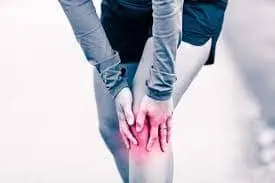
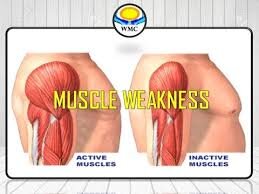
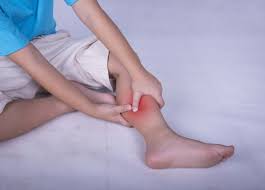
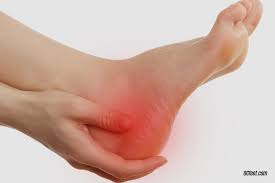
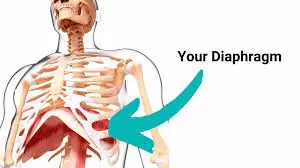
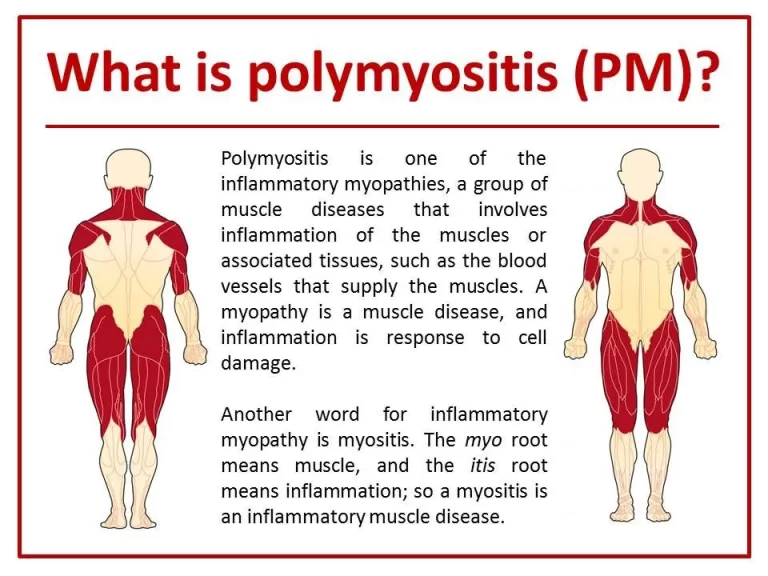
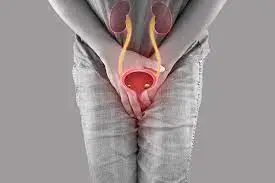
One Comment